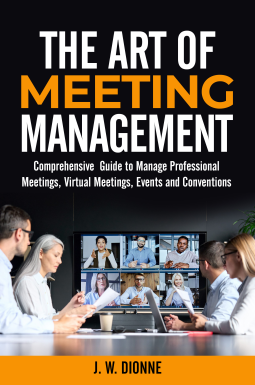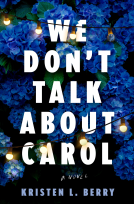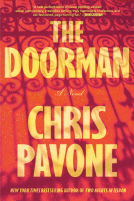
THE ART OF MEETING MANAGEMENT
A Comprehensive Guide to Manage Professional Meetings, Virtual Meeting, Events and Conventions
by J.W.DIONNE
This title was previously available on NetGalley and is now archived.
Send NetGalley books directly to your Kindle or Kindle app
1
To read on a Kindle or Kindle app, please add kindle@netgalley.com as an approved email address to receive files in your Amazon account. Click here for step-by-step instructions.
2
Also find your Kindle email address within your Amazon account, and enter it here.
Pub Date Sep 05 2022 | Archive Date Mar 14 2023
Talking about this book? Use #THEARTOFMEETINGMANAGEMENT #NetGalley. More hashtag tips!
Description
Half of all meetings are a waste of time - Here’s how to make sure your meetings aren’t!
According to a Clarizen/Harris Poll survey, the average American worker spends 4.5 hours every week in general status meetings, and an additional 4.6 hours preparing for these meetings.
And that’s not counting other meetings you can get called for at various times of the day..
But just 11% of survey respondents said all of their meetings were productive. And with 67% of workers saying meetings are keeping them from doing their job, why do companies still keep having them?
The thing is, meetings are essential in any organization.
Collaboration, discussion, and interaction are the lifeblood of a company’s progress and innovation.
Unfortunately, meetings can hamper these collaborations when they’re poorly planned, badly run, and haphazardly organized.
With the guidance and advice of meeting management expert J.W. Dionne, you’ll find out exactly what you have to do.
In The Art of Meeting Management, you will discover:
- How to have engaging, productive, and worthwhile meetings with the 6 Ps of Effective Meetings
- 5 meetings that could have been an email – these situations don’t actually require a meeting
- How to make meetings more inclusive and get even the quietest and most introverted attendees to speak up
- Useful skills you need to develop that will help you facilitate meetings, so they run smoothly
- The powerful psychological tool to apply in your meetings that will improve follow-through and promote compliance
- Why it’s better to have two short meetings than a long one
- Why you should encourage conflict during your meetings – and how to prevent it from getting out of hand
- Fun ideas for virtual meeting openers that will get your attendees engaged and ready to go
- And much more!
Meetings will never become obsolete.
They may take different forms and use different platforms, but the need to get together and collaborate will always be there
Advance Praise
"This is a well-written short book on holding not just good meetings, but effective ones, I’m a worship leader at a large church where we have lots of meetings; the info in this book is absolutely essential!
It seems a big part of meeting frustration stems from mistrust or lack of accountability among one another. This is more of a cultural issue in the business as well as a lack of accountability outside meetings. This is addressed more directly in the book.
I love how it lays out types of meetings and their purposes. The tips on how meetings should go and why they go bad are very helpful., 5.0 out of 5 stars Helpful and Informative!
Reviewed in the United States 🇺🇸 on October 14, 2022
It’s not a secret that meetings can be long, boring, unorganized and hectic. The truth of the matter is that no one wants to spend hours in meetings that’s pointless and poorly managed. However, with the help of this book you can master the art of managing meetings.
This book is the perfect guide for people who want to get the most out of their meetings. This book is very organized. It’s broken into three sections. The first section supplies details on how to prepare for the meeting. It provides in-depth information about everything that needs to be done to manage a meeting. It tells us about the key to effective meetings and describes how to reduce meeting overload. The second chapter has a significant amount of information that a beginner needs to know when managing a meeting. It explains how to create aims and how to format meeting agenda.
The second section provides details on how to facilitate your meeting. It advises how to set the tone for the meeting by adjusting the lights, music and stuff like that. It provides information on presentation and communication. It gives tips on how to begin the meeting and step by step process throughout the meeting. The third section helps with evaluating the meeting and so much more.
This is a great book. It’s book is well written and packed with helpful information and it’s also simple and easy to understand.
I love that the author, J.W. Dionne has years of experience with managing meetings. It's comforting to find someone who knows what they are talking about and can offer solid advice. I'm very grateful for him taking the time to put this information out and her genuineness to help others..
Highly Recommended!
Featured Reviews
At some point in our careers, we’ve attended several meetings that could have been an email. The Art of Meeting Management is true to its word, there is an art to managing a meeting. As J.W. Dionne aptly states “The problem is that not many people have been taught how to prepare for, manage, or run a meeting. “It’s true. It might be assumed that if you participate in a meeting, you could probably run one. This book challenges the idea of winging it and instead presents a 6-step framework (Preparation, Purpose, Plan, Participation, Points of Action, Post-Assessment) to support those who want to gain skills in holding meetings in person and online.
The message of this book centers on the idea of how to we want people to feel about meetings and how we can make meetings worthwhile. Meetings should have a clear purpose and specific agenda. Attention should be given to honoring the senses and providing a conducive atmosphere as well as attending to the energy in the room. Personally, I appreciated the templates provided and the information on how to differentiate for a variety of meeting sizes and types. In a sequel, I would love to see the author present their ideas on meetings that combine presentations or professional development. Specifically, pacing a meeting with one presenter vs. several. I enjoyed this book! It is one that I can see myself using in my current position and adding to my leadership shelf.
"The Art of Meeting Management" by J.W. Dionne is a valuable guide that deserves a solid four stars for its insightful approach to a common workplace challenge—inefficient meetings. In a world where time is a precious commodity, Dionne provides practical solutions to transform meetings from time-wasters into powerful tools for collaboration and progress.
Dionne starts by addressing a stark reality: half of all meetings are perceived as a waste of time. The author supports this claim with a Clarizen/Harris Poll survey, shedding light on the considerable amount of time American workers spend in meetings each week. However, what sets this book apart is not just highlighting the problem but offering concrete strategies to make meetings more productive and purposeful.
One of the strengths of "The Art of Meeting Management" lies in Dionne's emphasis on the importance of well-organized and purposeful meetings. The author recognizes that despite the challenges, meetings are essential for collaboration, discussion, and innovation within organizations. Dionne's expertise in meeting management shines through, providing readers with actionable insights and practical advice.
The book stands out for its focus on both planning and execution. Dionne doesn't merely discuss the problems associated with meetings; he delves into solutions, offering a blueprint for effective meeting management. The reader gains a comprehensive understanding of how to plan, conduct, and follow up on meetings to ensure they contribute meaningfully to organizational goals.
The writing style is clear, concise, and accessible, making it easy for readers to grasp the concepts and implement them in their professional lives. Dionne's use of real-world examples and case studies adds practical relevance, reinforcing the applicability of the strategies presented.
While the book effectively tackles the challenges of meetings, a more extensive exploration of adapting the strategies to different organizational cultures could enhance its applicability to a broader audience. Additionally, a more detailed discussion on leveraging technology for efficient virtual meetings could be beneficial.
In conclusion, "The Art of Meeting Management" is a valuable resource for anyone seeking to enhance the effectiveness of meetings in their professional life. J.W. Dionne's expertise shines through, offering a well-rounded guide that empowers readers to turn meetings into powerful instruments for collaboration and innovation. With its practical advice and actionable insights, this book is a must-read for those looking to make their meetings more purposeful and productive.
 J. K, Reviewer
J. K, Reviewer
In the world of business literature, “The Art of Meeting Management” by J.W. Dionne emerges as a beacon of practical wisdom. Dionne’s book is not just a guide; it’s a masterclass in transforming what many consider the bane of their workday—meetings—into a productive and engaging experience.
Dionne addresses the universal sentiment that meetings can be time-consuming and often unproductive. With a blend of wit and expertise, the author dismantles this notion, presenting a compelling case for the necessity of meetings while also providing a blueprint for conducting them effectively.
The book is structured around the “6 Ps of Effective Meetings,” a framework that promises to revitalize the most mundane of gatherings. Dionne’s approach is both inclusive and democratic, encouraging participation from even the most introverted attendees. This is not a book that merely talks at you; it converses with you, urging you to reflect on
Readers who liked this book also liked:
Kristen L. Berry
Multicultural Interest, Mystery & Thrillers, Women's Fiction



















